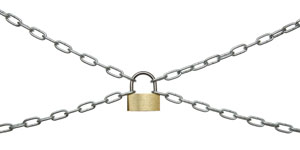Allyson Zimmermann is Executive Director at Catalyst Europe, where she works with leading global organisations, developing and supporting Catalyst members in advancing their diversity and inclusion initiatives to make positive change for women in the workplace. As a citizen of the US and Switzerland, she currently resides in Zurich, previously having lived and worked in five other countries. Allyson holds a B.A. in Communications and German from the University of Minnesota and outside of her role at Catalyst she is a professional coach.

“…Myths are often comfortable untruths that help us feel okay about the status quo. As long as we focus on ‘fixing’ women, we are not addressing the systemic barriers that are holding women back…”
It’s long been said that women’s choices and actions are behind the gender gap at the top of the business world with statements, like the below, used to explain this disparity:
“Women don’t want the top jobs.”
“Women don’t help other women get ahead.”
“Men and women receive the same development opportunities in the workplace.”
“Women lag behind because they have too few mentors and sponsors.”
To see if there was truth in these prevalent views, Catalyst embarked on an longitudinal study to look at the careers of several thousand male and female graduates from 26 leading business schools in Asia, Canada, Europe and the United States. Our findings should be a wake-up call to the corporate world (if not, the entire world).
Here are some of the ‘myths’ we’ve uncovered and have busted:
1. “Women aren’t ambitious.”
This is one we hear all the time. Statistically speaking, women aspire equally to men to attain the top jobs in their area of expertise (Catalyst’s global study on high potentials and boards and Europe study shows this, as well as other Catalyst research). However, if flexible options are not available, women’s aspirations drop by nearly 30%.
2. “Women don’t negotiate.”
According to our study on Ideal Workers, women DO ask, but asking doesn’t close the gender pay or position gap. After their first post-MBA jobs, there were no gender differences in whether or not high potentials negotiated for greater pay (63% of women vs. 54% of men) or for a promotion when beginning their current job (19% of women vs. 17% of men).
Even though these women negotiate for more when they change jobs, our research shows that women’s compensation growth was faster when they remained with the same employer, where they had proven performance, than when they started with a new employer, who paid based on potential.
3. “Women don’t do the right things to get ahead at work.”
Our myth of the ideal worker study shows that even when women do all the right things (and use the same tactics as men), only two tactics seem to show an impact on their advancement: 1) increasing their visibility and 2) proactively networking with influential others. For example, working long hours helped men much more than women, in terms of advancement.
4. “Women don’t want international assignments.”

5. “Women’s advancement is stopped by a glass ceiling.”
Actually we see that women start out from day one in a more junior role, with lower pay than men. Female MBA graduates can expect to earn $4,600 less than their male peers in their first job, even after adjustments are made for, prior career experience, industry, location and parenthood. This compounds over time.
6. “Being mothers is the biggest barrier holding back women.”
Not true. We found that lack of advancement was not due to having kids, it was happening equally for women without kids.
7. “Women don’t help other women.”
This is my favourite myth to bust. Our research shows that women are developing and helping women advance much more than men. Still this myth keeps getting perpetuated, despite evidence it is not true. We need to get beyond this ‘Queen Bee’ myth and celebrate the fact that women are indeed helping other women.
8. “The workplace is a meritocracy.”
We all want to believe that the workplace is a meritocracy, but it’s not. It has much more to do with increasing visibility, 
While one must be a top performer to advance, it is often not enough. Until the workplace is truly a meritocracy, taking steps to build relationships and visibility can go a long way to being considered for key projects, roles and promotions.
9. “Women lack the necessary skills to make effective leaders.”
Okay, this one is annoying. But I hear it all of the time from both men and women. Our research shows that women and men lead quite similarly; however, stereotypes still exist. Women are often seen as having ‘taking care’ behaviours whilst men were better at ‘taking charge’ behaviours. The ‘caretaker’ behaviours included supporting others and rewarding subordinates, while the male leaders were perceived to be more effective at delegating and problem-solving.
The key to tackling this myth is to recognise that women (and men) are not a monolithic group.
10. “Women need to go on more development training programmes to advance.”
Our research shows that even though women entered development programmes earlier in their careers and remained in them longer, men were more likely to get the ‘hot jobs’ following participation in these programmes.

However don’t take our word for it – check in your organisation. Are these myths alive and well? And, more importantly, how can they be busted once and for all?
https://twitter.com/catalystinc
https://twitter.com/allyzimmermann
https://www.youtube.com/user/CatalystClips





